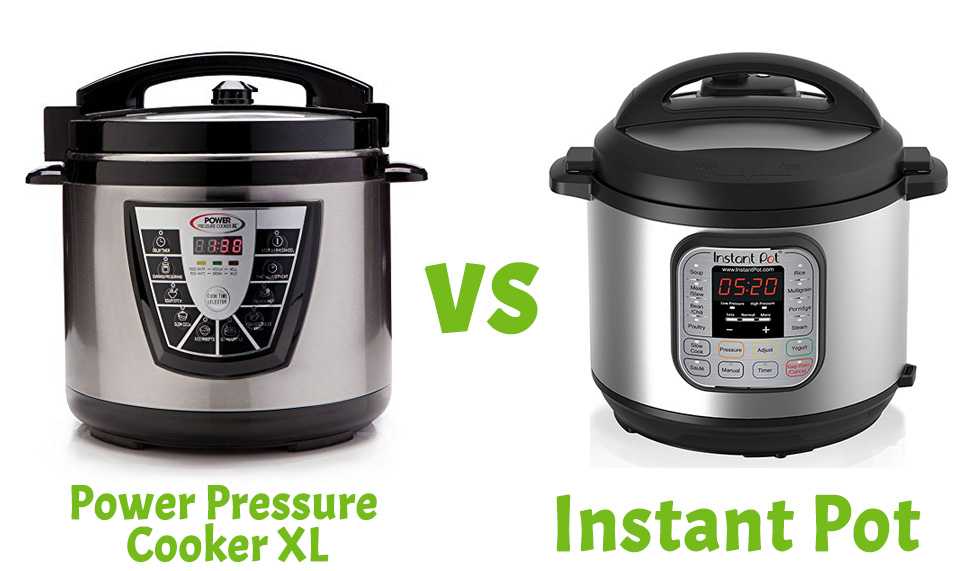Sewer systems play a crucial role in contemporary plumbing. Whenever you flush a toilet or use a sink or shower, you generate liquid waste with diverse chemical compositions that need to be transported and treated appropriately.
While septic tanks are an option, their widespread use in modern cities presents maintenance challenges and other issues. The management of waste is necessary due to its unpleasant odor and the presence of harmful bacteria and chemicals that could adversely impact the environment.
In this article, we’ll delve into the intricacies of sewer systems, providing insights into how they manage the immense volumes of wastewater generated globally every day!
Table of contents
- What Is A Septic System?
- How Does A Septic System Work?
- What Is A Septic Tank?
- How Does A Septic Tank Work?
- What Are The Parts Of A Septic System?
- Advantages of septic systems
- Disadvantages of Septic Systems
- How Much Does A Septic Tank Cost?
- FAQs On How Do Sewer and Septic Systems Work
- Conclusion
- References
- We Also Recommend
What Is A Septic System?
A septic system is an on-site wastewater treatment system commonly used in areas without access to a centralized sewer system. It consists of a septic tank and a drainfield (also known as a leach field or absorption field). Septic systems are a common and effective way to manage household wastewater in rural and suburban areas.
How Does A Septic System Work?
A septic system works as an on-site wastewater treatment system, managing and treating household wastewater in areas without access to a centralized sewer system.
Here’s a step-by-step breakdown of how a typical septic system operates:
Step 1: Wastewater Collection
Household wastewater from toilets, showers, sinks, washing machines, and other drains is directed into the septic system.
SEE ALSO: What’s the Difference Between a Pressure Cooker and an Instant Pot?
Step 2: Wastewater moves to the septic Tank
The wastewater enters a large, underground tank called the septic tank.
Inside the septic tank, solid waste materials settle to the bottom, forming a layer of sludge. Grease and lighter particles float to the top, creating a scum layer. The remaining liquid in the middle is the clarified effluent.
Step 3: Biological Treatment in the Septic Tank
Bacteria and enzymes naturally present in the septic tank begin the process of breaking down and decomposing the solid waste (sludge) into liquid and gases.
This biological treatment helps separate the liquid effluent from the solid waste.
READ ALSO: How Does Coffee Makers Work? In few Easy Steps
Step 4: Effluent Exit
The treated liquid effluent exits the septic tank, leaving the solid waste behind.
Step 5: Distribution to the Drainfield
The effluent flows into the drainfield, also known as the leach field or absorption field.
The drainfield consists of a network of perforated pipes or chambers buried in the soil. These pipes release the effluent evenly into the soil for further treatment.
SEE ALSO: How Does Urban Landscape Design Work?
Step 6: Soil Treatment
The effluent undergoes additional treatment as it percolates through the soil in the drainfield.
Soil microorganisms and natural processes in the soil continue the treatment, removing harmful bacteria, viruses, and other contaminants.
Step 7: Final Disposal
After treatment in the drainfield, the now-treated wastewater either reenters the groundwater system or evaporates into the air, completing the natural water cycle.
What Is A Septic Tank?
A septic tank is an underground container integral to a waste disposal system designed for residences without access to a municipal sewer network.
It operates alongside a drain field and a network of pipes to eliminate waste from a dwelling. In rural areas lacking city sewer connections, septic systems are commonly employed for wastewater disposal. Once installed with initial costs covered, septic systems incur minimal maintenance expenses when appropriately set up. While the top-tier and pricier tanks are crafted from concrete, alternatives include fiberglass and polyethylene.
READ ALSO: How to Clean a DVD | Full Guide
How Does A Septic Tank Work?
A septic tank is a watertight receptacle that collects all the water drained from a residence. Within the septic tank, waste undergoes a three-layer separation, consisting of scum, effluent, and sludge.
- Scum is the uppermost layer of waste found in a tank, containing oils and fats that rise to the water’s surface during a period of rest. This scum is a result of substances such as cooking grease, soap, and other fats originating from cleaning products or handwashing.
- Effluent constitutes the middle layer of waste, consisting of water that remains after the scum has ascended to the top and sludge has settled at the tank’s bottom. Effluent is directed through the tank outlet into the drain field, where it is dispersed into the soil.
- Sludge forms the lowermost layer of waste within a septic tank, encompassing solid waste that settles at the tank’s bottom during the separation from water. Additionally, sludge includes byproducts from other waste that undergo decomposition within the tank.

A septic tank relies on bacteria to decompose solid waste settling at the tank’s bottom. Once solids transform into liquid, they are pumped into the drain field, working in tandem with the septic tank. Waste containing enough liquid is directed into the soil through the drain field.
Issues may arise if the sludge layer in the tank becomes excessively high, potentially blocking the outlet pipe and impeding water flow to the drain field. This can lead to yard puddles when the tank overflows. During tank emptying, adding a bacterial additive can enhance the bacteria’s effectiveness in breaking down sludge into liquid.
Septic tanks are commonly constructed from materials like concrete, fiberglass, or polyethylene. These materials are preferable due to their resistance to cracking when situated underground. A cracked septic tank could result in waste leakage, forming puddles on the surface above the tank. The septic tank retains wastewater for a sufficient duration, allowing solids and oils to separate.
What Are The Parts Of A Septic System?
A septic system collects all wastewater from a home, breaks it down, and disposes of it. The following parts work together to help a septic system function:
- Drain line
- Septic tank
- Drain field
- Drain box
- Soil
Drain line
All plumbing in a home with a septic system converges at the drain line. The drain line then feeds all wastewater from a home into the septic tank.
SEE ALSO: How Does Dry Cleaning Work?
Septic tank
The septic tank accepts wastewater from the drain line. Once within the tank, liquid waste is directed to the drain field, while solid waste settles as sludge at the tank’s bottom. Over time, natural bacteria facilitate the decomposition of the sludge, allowing it to be pumped into the drain field.
Drain field
The drain field, also known as a leach field, receives liquid waste from the tank’s outlet and disperses it into the soil. It includes underground pipes with a downward slope, accompanied by a layer of gravel to distribute the wastewater from the septic tank. The arrangement of components in the drain field is intentionally crafted to prevent wastewater from emerging on your yard’s surface and to avoid runoff.

Image source: freshwatersystems
Distribution box
The distribution box, constructed from either concrete or plastic, is a cube-shaped structure engineered to uniformly distribute wastewater across a drain field or multiple drain fields.
Featuring numerous outlets leading to different segments of the drain field, it guarantees an even distribution of water to every part of the field. Positioned at a lower level than the septic tank, the distribution box relies on gravity for both receiving wastewater from the tank and disseminating it to the drain field.
READ ALSO: How Does Burglar Alarms Work ? An Expert Answer
Soil
Soil plays a crucial role in a septic system, serving as the ultimate treatment for wastewater. As water infiltrates the drain field and permeates downward, the soil works to eliminate bacteria, viruses, and nutrients present in the waste. Not all soil types are equally effective in treating septic waste.
Loamy soils, characterized by a diverse range of particle sizes, prove to be the most suitable for septic systems as they are less prone to clogging. Conversely, soils with high water absorption rates, like clay and silt, are susceptible to water absorption and potential clogs.
Advantages of septic systems
There are many positives to owning a home with a septic system.
- Properly maintained septic systems are considered more environmentally sustainable than sewer systems.
- Septic tanks boast a durable lifespan, lasting for several decades. The longevity of a septic system varies between 15 to 40 years, contingent on the quality of installation and ongoing maintenance.
- In terms of cost efficiency, septic systems prove advantageous compared to utilizing a sewer system, provided the tank doesn’t encounter issues. Regular maintenance, involving tank emptying every few years, incurs a cost ranging from $200 to $600. Beyond the initial setup expenses, septic systems remain relatively economical in comparison to city sewer systems.
SEE ALSO: How Does Swamp Coolers Work?
Disadvantages of Septic Systems
Although septic tanks are effective waste removal systems, they can encounter operational issues due to various reasons. Here are a few disadvantages of septic systems:
- Maintenance Requirements: Septic systems demand regular maintenance, including periodic pumping of the tank and potential repairs. Failure to adhere to maintenance schedules can lead to system malfunctions.
- Initial Installation Costs: The upfront cost of installing a septic system can be significant, covering expenses such as tank purchase, excavation, and system setup. This can be a financial burden for some homeowners.
- Limited Lifespan: While well-maintained septic systems can last for several decades, they eventually reach the end of their lifespan. Replacement or major repairs may be necessary, incurring additional costs.
- Environmental Impact: Poorly maintained or malfunctioning septic systems can pose environmental risks by contaminating groundwater with harmful bacteria and pollutants.
- Property Resale Challenges: Homes with septic systems may face challenges in the real estate market, as some buyers prefer properties connected to municipal sewer systems due to perceived convenience and reliability.
- Space Requirements: The installation of a septic system necessitates adequate space on the property for the tank, drain field, and associated components. This can limit landscaping options or outdoor activities in certain areas.
How Much Does A Septic Tank Cost?
A Norwesco tank with a capacity of 1000 gallons is priced slightly above $2000, while a 1500-gallon tank costs just over $2500. Constructed from polyethylene, these tanks boast lightweight and robust designs, ensuring ease of installation and resilience against external pressures. The installation cost of a septic system varies from $1500 to $5000, contingent on factors such as the tank’s location and size.
Once correctly installed, maintaining a septic system is cost-effective. The tank contents should be pumped out and the interior cleaned every 3 to 5 years, with the expense ranging from $200 to $600. Considering this periodic maintenance, septic systems can prove more economical than utilizing a city sewer system.
Whether you’re installing a new septic system or acquiring a property with an existing one, diligent monitoring of system performance and proactive maintenance are crucial. Addressing potential issues in advance can save you from the inconvenience and expense of septic system failure.
FAQs On How Do Sewer and Septic Systems Work
Septic tanks should be pumped every 3 to 5 years to remove accumulated sludge and scum. Regular pumping helps maintain the system’s efficiency and prevents potential issues.
Wastewater from the house flows into the septic tank, where solids settle at the bottom as sludge, and oils and fats float to the top as scum. The remaining liquid, known as effluent, exits the tank and enters the drain field, where it is dispersed into the soil for further treatment.
Certain items, such as non-biodegradable materials, excessive use of household chemicals, and flushing non-septic-safe items down the toilet, can harm a septic system. It’s essential to be mindful of what goes into the system.
Conclusion
While septic tanks are an option, their widespread use in modern cities presents maintenance challenges and other issues. The management of waste is necessary due to its unpleasant odor and the presence of harmful bacteria and chemicals that could adversely impact the environment.
References
- home.howstuffowrks.com – How Sewer and Septic Systems Work
- freshwatersystems.com – What Is a Septic Tank and How Does It Work?





